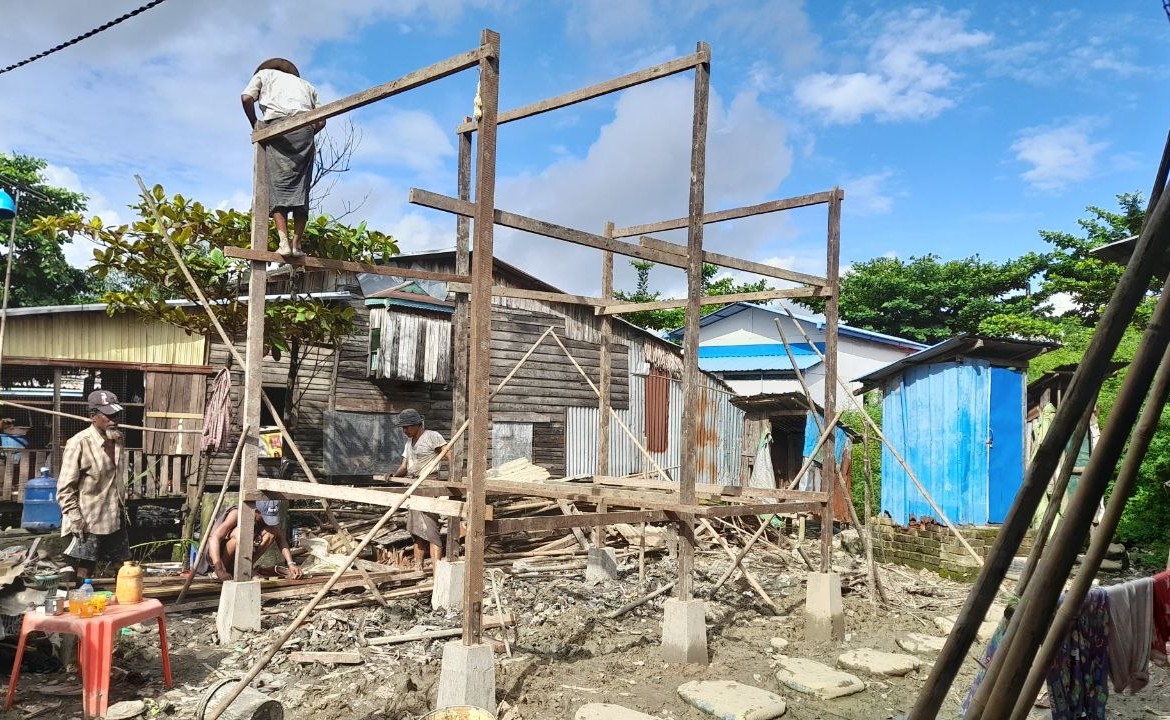


UN-Habitat partners with local organization Doh Eain to carry out a project to model housing improvements made accessible to residents in informal settlements.
In Yangon alone, an estimated 400,000 residents live in informal settlements. High population densities, household crowding, unsanitary conditions, and lack of access to water and proper waste management systems, leaves residents with greater susceptibility to disease spread and pandemics such as COVID-19. Furthermore, poorly constructed structures also lead to an increased vulnerability to climate change, natural disasters and intensifying weather related events such as more frequent flooding.
Informal settlements are a result of both infrastructure and policy struggling to adapt to the new conditions created by rapid urbanization. Aiming to address these gaps, UN-Habitat Myanmar carried out a demonstration project to model basic housing improvements that are accessible to residents in informal settlements. The project was conducted in collaboration with the local organization, Doh Eain.
"Our organization is a participatory design practice based in Yangon, Myanmar. We are dedicated to making cities better by ensuring they remain places with identity and that they are liveable, inclusive, and sustainable. We have been working with local communities on research and engagement, public space design, restoration, and outreach," said U Yun Ye Wai, senior project architect from Doh Eain. During the 1st wave of COVID-19, Doh Eain initiated the Yangon Neighbourhood Network (YNN), which connects grassroot organizations working across the city to coordinate, strengthen, and advance their initiatives to respond to crises and improve community welfare and resilience
UN-Habitat collaborated with Doh Eain to identify a location and a community to be the beneficiary of the implementation works. The demo project occurred during the months of August to October 2022 in a community from Ward 67 in Dagon Seikkan township, Yangon. The community was chosen based on criteria such as site size and condition, beneficiary needs assessment, and active and engaged community members. Participatory methods and tools such as community vulnerability assessments were used to ensure community members were engaged throughout the different stages of the project. Community members played a critical role in determining what kinds of improvements were needed. Several families were then collectively chosen as recipients of demonstration housing improvements.
Ko Kyaw Htay, Ma Mar Mar Win, and their two young children were very grateful to be selected as a beneficiary of the demo project. After their small trade business failed, they fell into debt and lost their house. Both parents have been taking every available job to earn money including collecting and selling sweet potato leaves that grow around the neighbourhood.
Doh Eain is always keen to hear from companies, NGOs or individuals wanting to join, collaborate or contribute, either with funds, materials, skills and/or time. Contact us if you’re interested to explore opportunities.